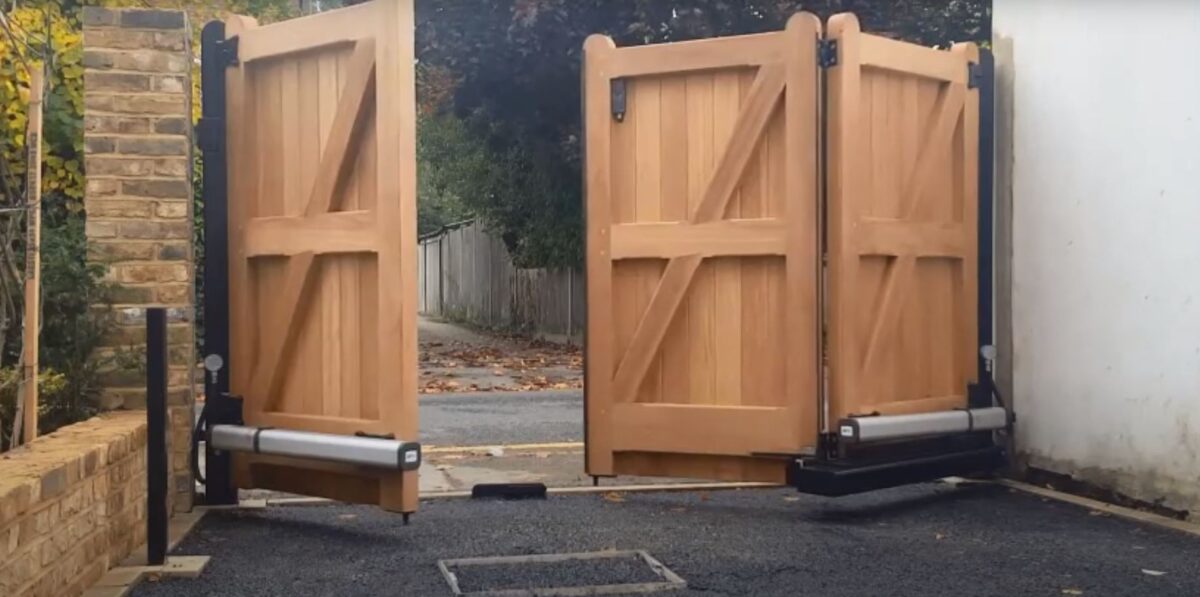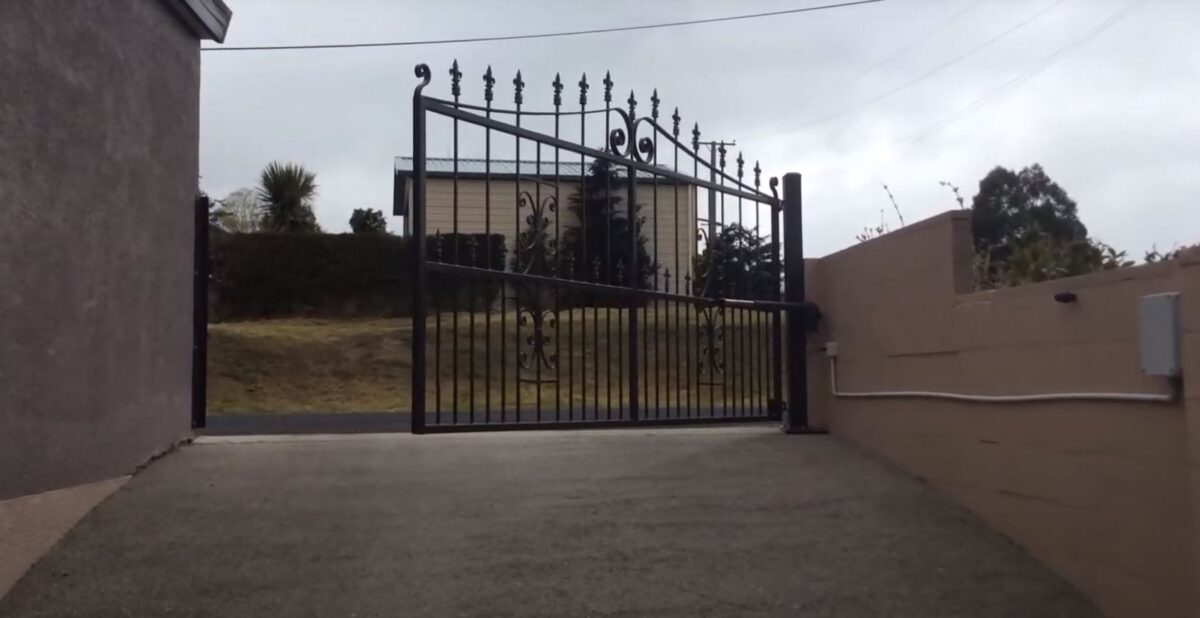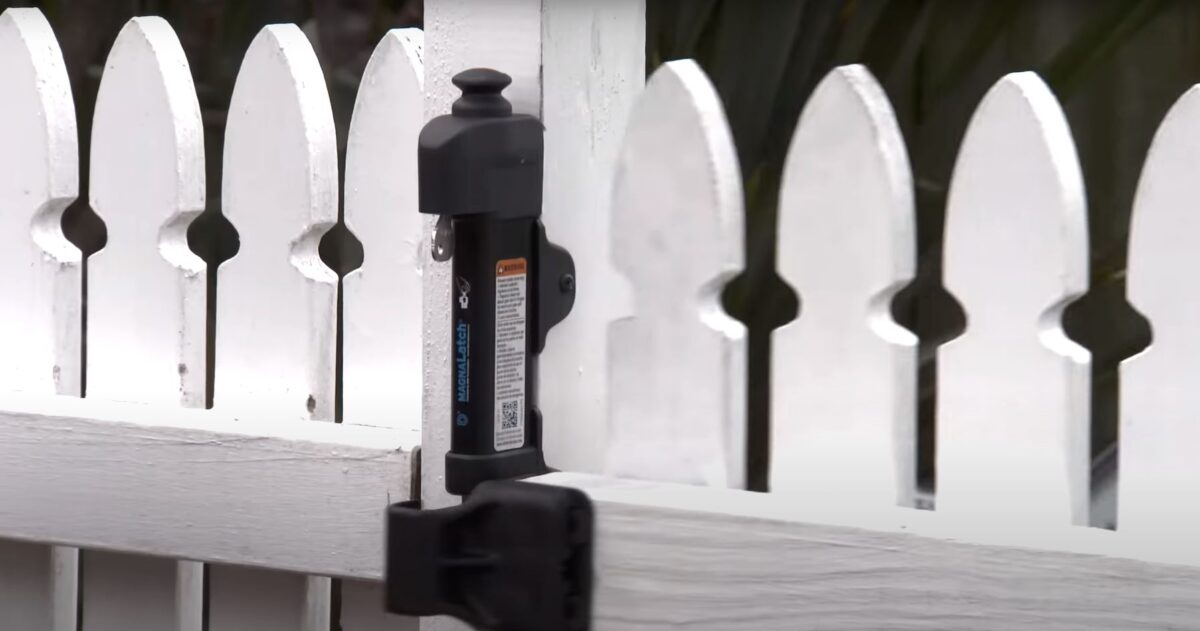Understanding the Basics of Gate Swing Direction
Choosing the direction in which a gate should swing is essential for its functionality, aesthetics, and safety. Commonly, gates swing inwards, meaning the gate opens towards the property. However, factors like slope, available space, purpose, and gate design can influence this decision.
The Logic of Inward Swinging Gates
- Safety: Inward swinging gates are harder for outsiders to push in, ensuring added security. Especially in suburbs like Epsom, where security can be a concern, an inward swing can act as an added measure of protection.
- Aesthetics: For properties with beautiful gate designs, an inward swing ensures that the gate’s intricate design is visible from the road when open.
- Space Utilisation: For properties with limited driveway space, an inward swing can avoid blocking or restricting access.
Reasons to Consider an Outward Swinging Gate
- Terrain Issues: In areas like Mount Eden, with its undulating terrains, an outward swing may be necessary if there’s a slope immediately inside the gate, which could obstruct an inward opening.
- Street Proximity: Gates near busy streets might be better swinging outwards to avoid swinging into the path of pedestrians or oncoming traffic.
Health and Safety Considerations
- Ensuring Clear Path: Regardless of the swing direction, ensure there are no obstructions in the gate’s swing path. This minimises the risk of injuries or damages.
- Visibility: Especially for outward swinging gates, ensuring visibility for incoming and outgoing traffic can prevent accidents.
- Locking Mechanisms: Ensure that locks are accessible and functional from both inside and outside.
Types of Timber Gates and Their Preferred Swing Direction
Sliding Gates:
- Description: Sliding gates operate by moving to the side, running parallel to the fence or wall. Instead of a traditional swing mechanism, they slide on a track or use a cantilever system. These gates can be either manual or automated.
- Preferred Direction: Technically, these don’t swing, but they slide either to the left or right. The direction is often chosen based on driveway layout, obstacles, and the location of the house.
- Best Suited For: Properties with limited space for a swing gate, steep driveways, or those looking for a modern touch.
Single Swing Gates:
- Description: As the name suggests, these gates have a single large panel that swings open. They’re simple, elegant, and are common choices for residential homes.
- Preferred Direction: Can be both inward or outward. The direction is primarily based on safety considerations, available space, and aesthetic preferences.
- Best Suited For: Smaller entrances, pedestrian pathways, or properties with ample swing space.
Double Swing Gates:
- Description: Comprising two panels or “leaves”, these gates meet in the middle when closed. They offer a grand appearance and are often used for wider entrances.
- Preferred Direction: Most often, these swing inward, but certain factors like road proximity or landscaping may necessitate an outward swing for one or both leaves.
- Best Suited For: Wider entrances, such as those for driveways, especially if the property owner wants a more symmetrical, grand entrance.
Garden Gates:
- Description: Typically smaller than driveway gates, garden gates serve as entry points to gardens or backyards. They can be ornate or simple, often reflecting the aesthetic of the garden they enclose.
- Preferred Direction: Mostly inward, as it’s aesthetically pleasing to have them open into a garden or yard. However, the terrain or specific garden layout can sometimes dictate an outward swing.
- Best Suited For: Garden pathways, pedestrian entries, or points leading to secluded areas of a property.
Bi-fold Timber Gates:
- Description: These are folding gates, usually made up of two panels that fold back onto themselves. They’re a space-saving solution that combines the benefits of sliding and swing gates.
- Preferred Direction: They fold either inward or outward, depending on the available space and specific design considerations.
- Best Suited For: Properties with limited side space but enough depth for the gates to fold, or entrances where rapid opening and closing are essential.
Tailoring the Timber Choice:
It’s worth noting that the type of timber used can also influence the gate’s design, weight, and swing direction. Woods like Pine, Macrocarpa, or native New Zealand Kauri offer different aesthetics, durabilities, and price points. Quality Fencing Auckland provides expert guidance on timber choice tailored to Auckland’s specific conditions and individual property gate installation needs.
Cost Implications Based on Swing Direction and Type
The cost can vary based on the timber chosen, gate type, and added features. For instance, adding a mechanism to ensure an outward swinging gate near a street doesn’t hit pedestrians can increase costs. Quality Fencing Auckland offers competitive pricing for different gate types and customisations.
Factors Influencing the Decision on Gate Swing Direction
- Gate Purpose: A functional driveway gate may have different requirements compared to a decorative garden gate.
- Existing Infrastructure: The presence of walls, trees, or other structures might dictate swing direction.
- Local Regulations: Some Auckland suburbs might have regulations on gate swing directions, especially if the property is close to public spaces.
Summary Table: Gate Types and Recommendations
| Gate Type | Preferred Direction | Typical Cost (NZD) | Suitable For |
| Sliding Gate | N/A (Slides) | $1950 – $3900 | Properties with limited swing space |
| Single Swing Gate | Inward/Outward | $1300 – $3250 | Smaller entrances |
| Double Swing Gate | Mostly Inward | $2600 – $5200 | Wider entrances |
| Garden Gate | Inward | $650 – $1950 | Garden pathways, pedestrian entrances |
Seeking Expert Advice for Your Gate Installation
While this guide offers insights into the swing direction and types of timber gates, individual property characteristics can play a significant role. Engaging with professionals, such as Quality Fencing Auckland, ensures that your gate not only looks good but functions seamlessly, adding value to your property.
Frequently Asked Questions About Timber Gate Swing Directions
Why is the swing direction of a gate important?
- Answer: The swing direction impacts accessibility, safety, and the overall functionality of the gate. It ensures that the gate doesn’t obstruct pathways, roads, or internal spaces when opened, and it also determines how users interact with the gate.
Can I change the swing direction of my existing gate?
- Answer: Yes, in many cases, it’s possible to modify the swing direction. However, it might require structural changes, repositioning of hinges, and possibly adjustments to posts or nearby structures. It’s best to consult with professionals, like Quality Fencing Auckland, to evaluate feasibility and costs.
How does terrain or driveway slope affect my gate’s swing?
- Answer: Sloped terrains can restrict the swing direction, especially for larger gates. If a gate swings downhill, it may not open fully due to ground contact. In such cases, sliding gates or gates that swing outward, away from the slope, might be more suitable.
Are there regulations in Auckland regarding gate swing direction, especially if my property is near a public road?
- Answer: Yes, local regulations in areas like Ponsonby or Grey Lynn might stipulate that gates should not swing outward onto public sidewalks or roads to prevent obstruction or safety hazards. Always check with local councils or professionals familiar with Auckland regulations before installation.
Does the type of timber used affect the swing direction or functionality?
- Answer: While the timber type primarily affects the gate’s aesthetics and durability, exceptionally heavy wood might influence the choice of hinges and support structures, which could, in turn, impact swing direction considerations. Always ensure that the selected timber is appropriate for the desired gate type and swing.
Can my double swing gate have one leaf swing inward and the other outward?
- Answer: While uncommon, it’s technically possible. However, such a configuration can be complex to implement and might look asymmetrical when the gates are open. It’s essential to weigh the practical benefits against aesthetic considerations.
How does weather affect the swing of a timber gate?
- Answer: Over time, exposure to Auckland’s varied weather can cause timber to expand, contract, or warp. Regular maintenance, sealants, and choosing weather-resistant timber types can mitigate these effects. If the swing is affected, minor adjustments or repairs might be needed.
How much space should I keep for my gate to swing freely?
- Answer: Ensure there’s enough unobstructed space for the gate’s full arc. For example, a 3-meter wide swing gate would need roughly 3 meters of clearance. Consider other elements like landscaping, parked cars, or future property modifications.
Are inward swinging gates safer than outward swinging ones?
- Answer: Inward swings are typically safer as they don’t pose a risk to pedestrians or vehicles passing by. However, security can be a concern, as inward-swinging gates might be easier for intruders to push open. Consider additional security measures like bolts or electronic locks.
Why would I choose a bi-fold gate over a traditional swing or sliding gate?
- Answer: Bi-fold gates are excellent space savers, combining the rapid operation of swing gates with the space efficiency of sliding gates. They’re especially suitable for properties with limited side space but sufficient depth for the gate to fold back.
Key Takeaways on Timber Gate Swing Directions and Choices
Swing Direction Matters: The direction in which your gate swings impacts functionality, safety, aesthetics, and accessibility. Ensure it doesn’t obstruct pathways or roads, especially in Auckland suburbs like Ponsonby or Grey Lynn.
Variety in Timber Gates: From sliding gates to double swing and bi-fold gates, there’s a myriad of gate styles to fit every property’s requirements and aesthetic desires.
Local Regulations: In some Auckland locales, regulations might dictate swing directions, especially if properties border public roads. It’s crucial to stay informed and adhere to these stipulations.
Terrain Considerations: The slope of a property can significantly influence the best swing direction, especially for larger gates. Gates might need to swing away from slopes or be of a sliding design to function efficiently.
Timber Choices Affect Gate Design: Different woods like Pine, Macrocarpa, or Kauri, not only influence aesthetics and durability but can also play a role in determining hinge strength, support structures, and by extension, swing considerations.
Changing Swing Direction: Modifying the swing direction of an existing gate is possible, though it may require expert intervention and potential structural changes.
Weather Impacts: Auckland’s weather can affect timber gates. Regular maintenance and selecting the right timber type can mitigate warping, contraction, or expansion due to weather changes.
Space Requirements: Ensuring there’s ample space for a gate to swing or slide fully is crucial. This consideration includes both the gate’s arc and any surrounding elements like landscaping or parked vehicles.
Safety and Security: While inward-swinging gates are generally safer in terms of pedestrian and vehicular traffic, they might pose security concerns. Enhancing gate security through locks or electronic systems can be beneficial.
Engaging Experts is Key: For optimal results, especially in diverse Auckland conditions, engaging professional services like Quality Fencing Auckland ensures that the chosen gate type, timber, and swing direction are all in harmony, enhancing property value and functionality.
References
New Zealand Building Code (NZBC):
Handbook on external moisture management which addresses aspects related to gates and barriers, ensuring they don’t act as a pathway for moisture.
Link to NZBC External Moisture Handbook
Auckland Council’s Residential Fencing Guide:
A comprehensive guide detailing requirements for fencing, gates, and other property barriers within Auckland’s jurisdiction.
Link to Auckland Council’s Guide
Engineers New Zealand:
Provides valuable insights into best engineering practices, especially regarding gate installations in areas with challenging terrains or specific structural requirements.
NZ Timber Design Guide:
A thorough exploration of different timber types used in New Zealand construction, offering insights into durability, appearance, and structural considerations.
Link to NZ Timber Design Guide
Auckland University’s Department of Civil and Environmental Engineering:
Research papers and publications offer scientific insights into timber gate constructions, their mechanics, and their interplay with New Zealand’s unique environmental factors.
Link to Auckland University’s Research



